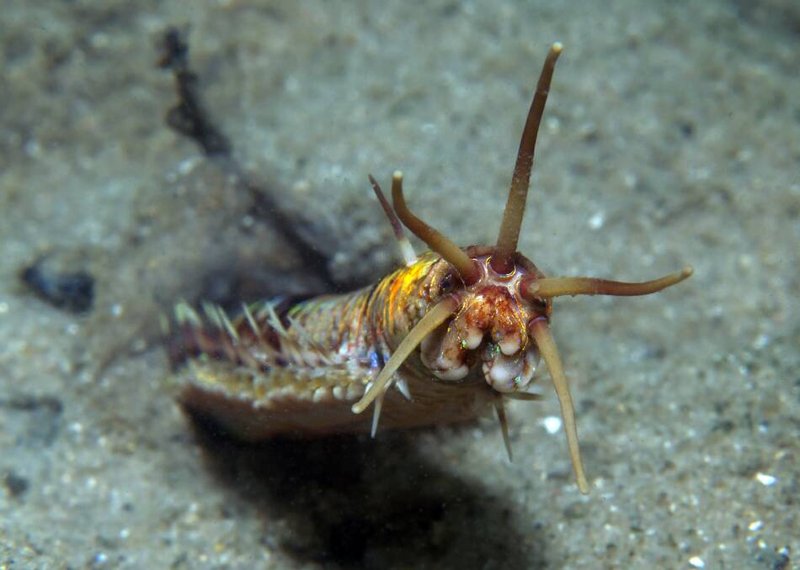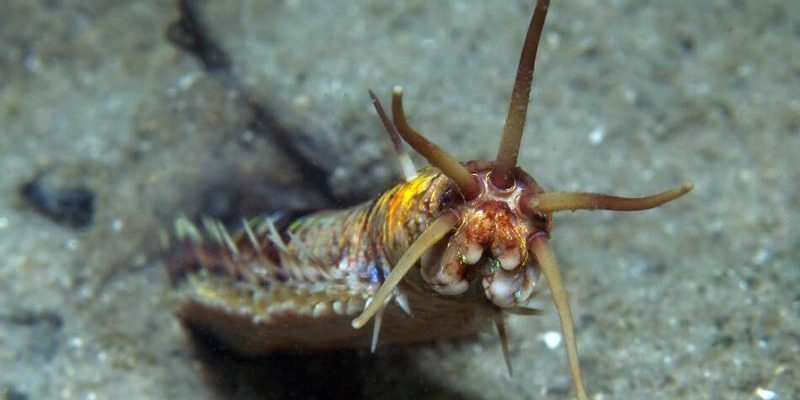
Bobbit worms, scientifically known as *Eunice aphroditois*, can grow up to ten feet long and are often found in tropical and subtropical waters. These marine predators spend most of their lives hidden in burrows, where they wait patiently for prey to swim by. When something unsuspecting comes close, they strike with a quick, powerful bite, drawing comparisons to mythological monsters. But why are these worms making waves in the marine hobbyist community? Let’s dive deeper into their impact on aquarium enthusiasts and the reactions that follow when Bobbit worms are discovered.
Understanding the Bobbit Worm Phenomenon
Marine hobbyists often have a love for the unique and bizarre aspects of ocean life. The Bobbit worm fits right into that category. It’s not just about its size or appearance; it’s how it captures the imagination. When hobbyists come across articles or videos showcasing these worms, they often react with fascination and a hint of apprehension. After all, how many creatures can boast such a dramatic hunting style?
Many hobbyists are curious about how to identify a Bobbit worm in their aquarium or reef tank. Sometimes, these creatures are accidentally introduced when purchasing live rock or coral, leading to surprise discoveries. Imagine setting up your new saltwater tank and, weeks later, noticing a long, segmented creature peeking out from the substrate. Your heart races; is it a threat or just an interesting new inhabitant? Understanding Bobbit worm behavior and habitat is crucial for enthusiasts.
The excitement surrounding Bobbit worm stories often leads to lively discussions in marine forums or social media groups. People share their findings, express their fears, or even recount the moment they first laid eyes on one. These worm tales can escalate quickly, drawing in more marine enthusiasts, eager to share their experiences and knowledge.
The Impact on Aquarists
For marine hobbyists, the presence of a Bobbit worm can spark mixed reactions. Some see the creature as an exotic addition to their tanks, while others worry about its predatory nature. The worm is known for its ability to attack unsuspecting fish or invertebrates, making it a potential threat in many home aquariums. This concern leads some aquarists to consider removing the Bobbit worm if discovered.
Let’s be honest: the idea of losing your prized fish to a surprise ambush isn’t exactly comforting. Hobbyists often weigh the pros and cons before making decisions about their aquatic life. For example, some may decide to keep a Bobbit worm, seeing it as a fascinating display of nature’s wild side. Others may feel compelled to remove it, seeing their fish stocks as the priority.
Removing a Bobbit worm isn’t always straightforward, though. These creatures can burrow deep into the substrate, making a removal attempt tricky. Some hobbyists may turn to experienced aquarists or marine specialists to get advice on safely extracting the worm. Sharing tips and tricks in community forums ensures that everyone can navigate this unique challenge effectively.
Common Myths and Misunderstandings
There’s no shortage of myths floating around about Bobbit worms, and these tales often fuel the excitement or fear surrounding them. One popular misconception is that Bobbit worms are aggressive and will attack anything that moves. While they are indeed predators, their behavior in captivity is often more subdued than many believe. Most of the time, they’re simply waiting patiently for food to come their way.
Another myth is that Bobbit worms are harmful to larger, healthy fish. While they can pose a threat to smaller fish or invertebrates, mature and healthy fish often manage to avoid becoming prey. Marine hobbyists might find it helpful to observe the worm’s behavior for a bit before jumping to conclusions. Hey, maybe it’s just a curious neighbor rather than a lurking monster!
It’s also essential to note that Bobbit worms are not universally harmful or invasive. In many cases, they play a vital role in their ecosystems, helping to keep populations in check. Understanding their place in the marine hierarchy can help hobbyists react more thoughtfully to their presence.
Stories That Capture Attention
There’s something captivating about stories and videos that feature Bobbit worms. From the spectacular revelation of their true length to their impressive hunting skills, these narratives usually draw in viewers like moths to a flame. Many marine hobbyists share personal accounts of their own Bobbit worm experiences, often starting with a sense of curiosity that turns into shock or amusement.
For instance, a common tale involves someone discovering a Bobbit worm in their newest coral purchase. The excitement of the find quickly turns into a scramble to safely relocate the creature. Hearing about someone setting up a tank to observe a Bobbit worm in action can ignite the imaginations of other hobbyists. After all, who wouldn’t want a front-row seat to nature’s drama?
These stories also tend to blend humor with cautionary advice. A hobbyist might share a harrowing tale of how they accidentally lured a Bobbit worm out of hiding by dropping a piece of food, only to be startled by its lightning-fast strike. These narratives create a sense of community, helping hobbyists bond over their shared experiences.
How to Coexist with Bobbit Worms
For those who find themselves with a Bobbit worm in their aquarium, it’s essential to approach the situation with knowledge and understanding. First, assess the current inhabitants of your tank. If you have small fish or delicate invertebrates, it may be wise to consider relocating the worm. However, if your tank houses larger fish that can hold their own, it might be possible to keep the worm without trouble.
One way to handle this situation is by creating designated areas in your aquarium. For example, you can provide a “safe zone” for smaller fish, separated from where the Bobbit worm typically resides. This method allows both the worm and your fish to thrive. Remember, it’s all about balance!
If you do decide to remove a Bobbit worm, be prepared with the right tools and techniques. Using a siphon tube or a net can make the process smoother. Additionally, consulting with a local marine biologist or visiting a community forum can offer valuable advice on the best practices for removal.
Embracing the Unique Aspects of Marine Life
At the end of the day, Bobbit worms serve as a reminder of the diverse and intricate world beneath the waves. For marine hobbyists, these creatures are not merely oddities; they speak to the beauty and complexity of ocean life. The reactions to their discoveries can range from delight to concern, but in every case, they foster discussion and engagement within the marine community.
You might be wondering how you can further embrace this sense of adventure in your hobby. Consider exploring other less-known marine creatures, researching their behaviors, and sharing your discoveries with fellow enthusiasts. By doing so, you’ll contribute to a more profound understanding of marine ecosystems while enjoying the wonders they hold.
So, the next time you hear a story about a Bobbit worm, remember it’s not just a creature of myth; it’s part of the grand tapestry of marine life. Whether you choose to keep, remove, or simply observe, embrace the chance to learn and connect with the aquatic world around you.
In conclusion, the fascination with Bobbit worms is just one example of how marine life can captivate our curiosity and imagination. By engaging with these stories, marine hobbyists can appreciate the beauty, excitement, and occasionally the challenges that come with exploring the ocean’s mysteries.

